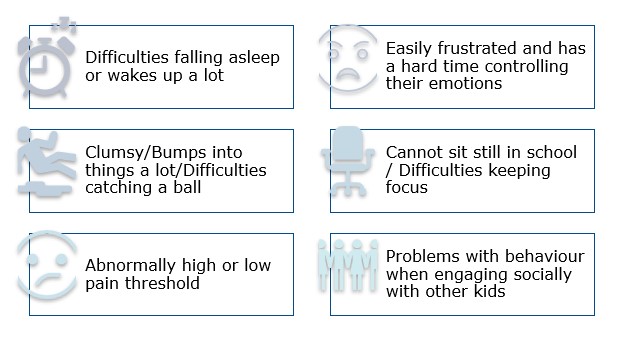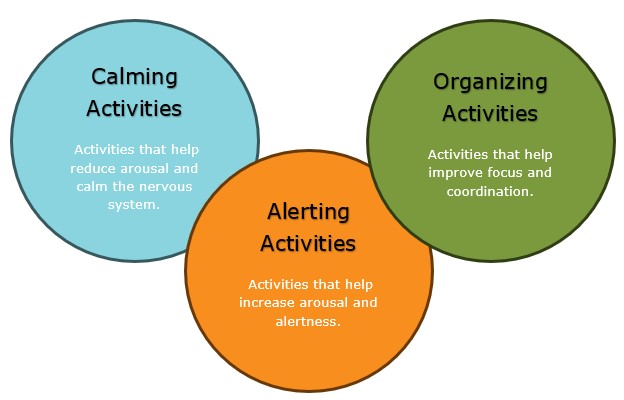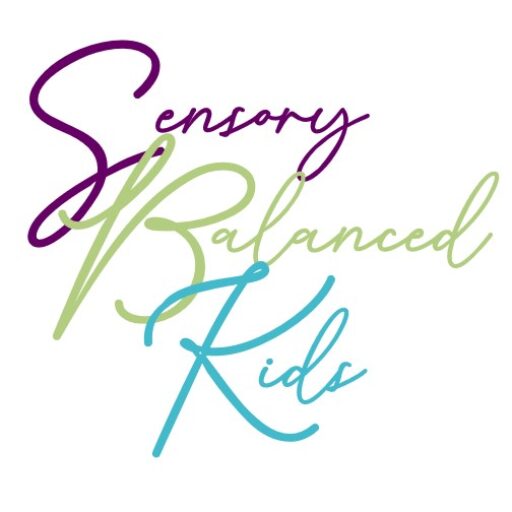
Sensory Processing
How do you know if your child has a Sensory Processing Disorder?
Sensory Processing Disorder (SPD) is a when the brain has difficulty receiving and responding to information that comes in through the senses. This can affect how a person processes sensory information and can lead to problems in everyday functioning.
And this last part is key. Most of us have some kind of sensory
input that we dislike or avoid. Some find it overwhelming to be in a big crowd and some hate wearing sweaters with agora wool or any kind of labels in it. The difference from this and SPD is the effect it has on everyday functioning.
Thus the first sign of SDP is that you experience that your kid has quite severe difficulties in their everyday functioning. These difficulties can present itself in many ways, but here are some examples on difficulties that can (but not necessarily do) come from SDP:

And the list could go on. SPD can occur in each sensory system (Visual, Tactile, Olfactory, Auditory, Vestibular, Proprioceptive and Taste).
Generally difficulties can occur in any of the higher levels in the Pyramid of Learning if you child has a SPD.
Sensory Profiles
If you think your child might have a sensory processing disorder then the first step is to understand the different sensory profiles and how they each react to sensory inputs from the sensory systems. When our eldest was in daycare, we were introduced to the sensory profiles compared to the beloved characters from the 100 acre woods. To this day I still find that this is the absolute easiest way to understand the characteristics of each profile – maybe because I have always loved these characters.

Sensory seeker (Tigger)
Kids who are sensory seeking crave more intense sensory input. They may constantly seek out sensory experiences such as moving, touching, or making noise. The Tigger kids are often thought to have ADHD, since they are very impulsive and tend to move around a lot and have problems sitting still and maybe makes sounds to stimulate themselves. Tigger kids are also often optimistic, outgoing and fearless.
Low registration (Eeyore)
Kids with low registration have a high threshold for sensory input and often miss or do not respond to sensory stimuli. Eeyore kids can be perceived as lazy and uninterested, and they might miss important information. They are often flexible and relaxed in most situation, and they can be quite clumsy due to a low postural tone.
Sensory avoider (Rabbit)
Kids who are sensory avoiding are easily overwhelmed by sensory input and tend to withdraw from sensory experiences. They typically like to have steady routines and structure, and they can be seen as stubborn and commanding, since they often have a big need to control their environment. Rabbit kids will often tend to say no to new experiences.
Sensory sensitive (Piglet)
Kids with sensory sensitivity are highly aware of sensory stimuli and can be easily distracted by sensory input. Piglet kids will struggle in situations with lots of sensory input since they will take note of every little detail – they have no filter. And they will have the need for breaks to avoid overstimulation. They can be seen as fearful and anxious, but also kind and gentle. With Piglet kids you can experience a delayed reaction to overstimulation (kids crying and being frustrated the day after an overwhelming situation)
Sensory diet
A sensory diet is a personalized plan of sensory activities designed to help individuals with SPD regulate their sensory input. Just like a nutritional diet is tailored to meet the specific needs of the body, a sensory diet is tailored to meet the sensory needs of the brain.
One way to understand it is comparing the brain to a thermostat. The thermostat brain of a child with SPD will either set the temperature too high or too low. The goal of the sensory diet is to help set the thermostat just right, which of course will increase the wellbeing for the child.
Think about it – if you’re either way too hot or way too cold will you be able to learn, focus, concentrate optimally? NO! And this is the same for the child with SPD. When you child starts doing a Sensory Diet Routine of activities about 5-10 minutes, minimum 2 times a day, you will likely start seeing improvement in concentration, learning, social skills, and motor skills (all the higher levels in the pyramid of learning).
The activities of the sensory diet should consist of a combination of:

So how do you do this?
Creating a sensory diet tailored to each of the four sensory profiles involves identifying specific activities that meet the needs of individuals within those profiles. Be aware, that your child e.g. can be sensory seeking in some senses or in certain circumstances, and sensory avoiding in others.
It takes quite a bit of observation!
This is why I believe that it is important that parents also know a bit about this, and not only rely on the observations of an Occupational Therapist in order to help your child the most.
If for some reason going to an Occupational Therapist is not an option, it is possible to start your own DIY Sensory Diet. Once you have identified your child’s sensory preferences and needs for each sense, you can create a sensory diet routine. I have gathered a few activities for each of the senses that are either alerting, calming or organizational to get you started. You’ll find them HERE. Again – remember that your child might need calming activities for one sense and alerting for another. And remember that I am not a Occupational Therapist and these are simply suggestions and not tailored the specific needs of your child.
Below you find two examples on how these activities can be brought together for a tailored sensory diet.
Example 1: Sensory diet for a sensory seeker
A sensory seeker craves sensory input and often engages in activities that provide strong sensory experiences. This sensory diet includes a mix of alerting, organizing, and calming activities to help them get the input they need while maintaining regulation.
Morning:
Alerting:
Jumping on a Trampoline (10 minutes): Provides vestibular and proprioceptive input.
Brisk Walk to School (15 minutes): Increases alertness and provides proprioceptive input.
Organizing:
Body Sock Play (5 minutes): Provides deep pressure input and helps organize the sensory system.
Midday:
Alerting:
Recess Activities (20 minutes): Climbing, running, and swinging at the playground.
Organizing:
Animal Walks (5 minutes): Engages proprioceptive input in a structured manner.
Afternoon:
Calming:
Weighted Blanket or Lap Pad (10 minutes): Use during homework time.
Organizing:
Theraputty Play (10 minutes): Engages fine motor skills and provides proprioceptive input.
Puzzle Completion (15 minutes): Focuses attention and organizes visual input.
Evening:
Calming:
Rocking in a Chair (10 minutes): Gentle vestibular input to wind down.
Listening to Soft Music (15 minutes): Auditory calming input before bedtime.
Organizing:
Gentle Yoga Poses (10 minutes): Combines proprioceptive and vestibular input in a structured way.
Example 2: Sensory diet for a sensory Avoider
A sensory avoider is easily overwhelmed by sensory input and may need activities that help reduce overstimulation and gradually build tolerance to sensory experiences. This sensory diet focuses on calming and organizing activities with gradual exposure to alerting activities.
Morning:
Calming:
Weighted Blanket (10 minutes): Use during breakfast or morning routine.
Deep Breathing Exercises (5 minutes): Helps start the day with a calm mind.
Organizing:
Body Sock Play (5 minutes): Provides deep pressure input and helps organize the sensory system.
Midday:
Calming:
Quiet Corner Break (10 minutes): Spend time in a low-stimulation environment with soft lighting.
Noise-Canceling Headphones (15 minutes): Use during noisy parts of the day.
Organizing:
Slow Swinging (10 minutes): Gentle vestibular input to organize the sensory system.
Afternoon:
Calming:
Weighted Blanket or Lap Pad (10 minutes): Use during homework time.
Organizing:
Sensory Bins (10 minutes): Play with rice or beans to provide tactile input.
Sorting Activities (10 minutes): Sort objects by color, size, or shape to organize visual input.
Evening:
Calming:
Warm Bath (15 minutes): Provides soothing tactile input and helps reduce stress.
Listening to Nature Sounds (10 minutes): Auditory calming input to help relax.
Organizing:
Slow Rocking (10 minutes): Gentle vestibular input to help organize before bed.

Get in Touch
I am happy to receive questions and comments!
